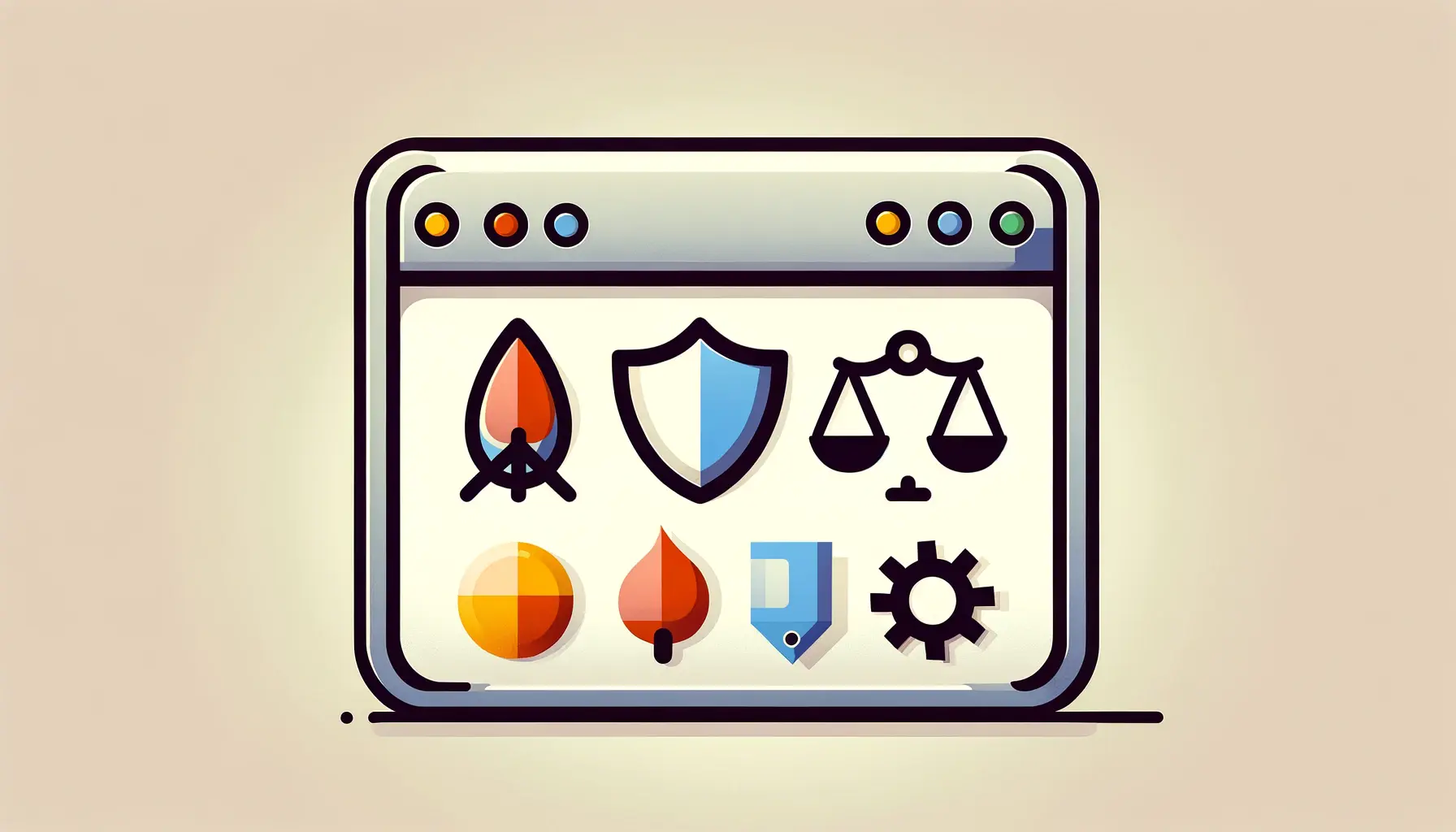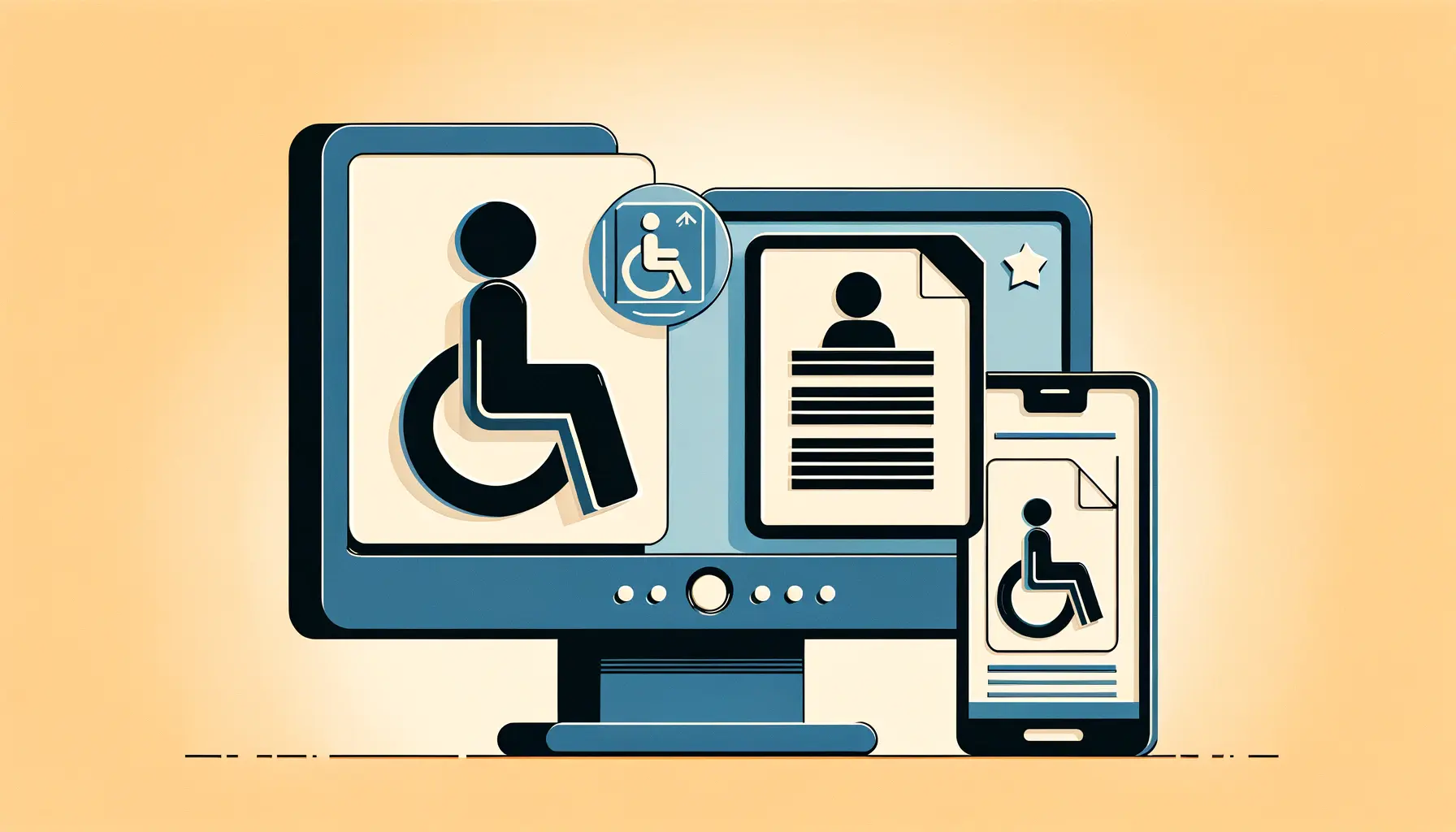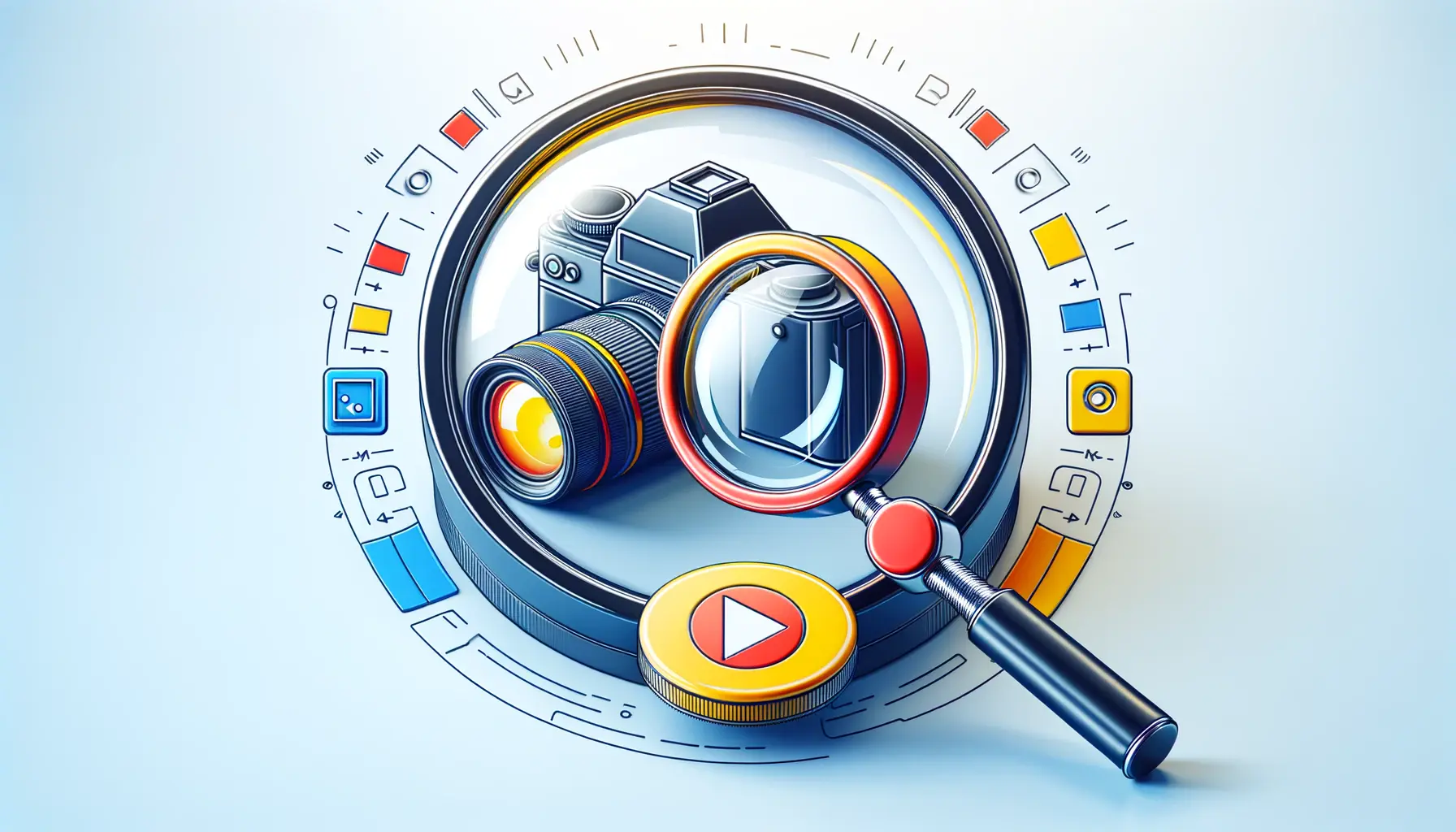In today’s digital age, multimedia content has become a cornerstone of communication, education, and entertainment.
From educational videos to interactive webinars, the ability to convey complex information through audiovisual means has transformed how we engage with content.
However, this evolution brings to light the critical importance of making multimedia content accessible to everyone, regardless of their physical abilities.
Accessibility in multimedia is not just a courtesy but a necessity to ensure that all individuals have equal opportunities to consume, understand, and benefit from digital content.
The concept of multimedia accessibility encompasses a broad spectrum of strategies and technologies designed to remove barriers that may prevent people with disabilities from experiencing web content fully.
This includes individuals with visual, auditory, motor, and cognitive impairments.
By prioritizing accessibility, content creators can significantly enhance user experience, ensuring that their messages reach a wider, more diverse audience.
This commitment to inclusivity not only aligns with ethical standards and legal requirements but also opens up new avenues for innovation in content creation.
- Understanding the Importance of Multimedia Accessibility
- Strategies for Enhancing Multimedia Accessibility
- Legal and Ethical Considerations in Multimedia Accessibility
- Technological Advances in Multimedia Accessibility
- Best Practices for Creating Accessible Multimedia Content
- Engaging Diverse Audiences with Accessible Multimedia
- Future Trends in Multimedia Accessibility
- Conclusion: The Path Forward for Multimedia Accessibility
- Frequently Asked Questions About Ensuring Multimedia Content Accessibility
Understanding the Importance of Multimedia Accessibility
At its core, multimedia accessibility aims to ensure that all users can access and interact with digital content in ways that suit their individual needs and preferences.
This involves creating content that is perceivable, operable, understandable, and robust.
Perceivability ensures that users can identify and process information through their preferred sensory channels, while operability means that users can navigate and use the content regardless of how they interact with their devices.
Understandability ensures that content is clear and predictable, and robustness allows the content to be interpreted reliably by a wide variety of user agents, including assistive technologies.
Implementing multimedia accessibility is not just about adhering to standards; it’s about embracing the diversity of the human experience.
It acknowledges that each user interacts with digital content in unique ways and requires different tools and approaches to do so effectively.
From providing captions and audio descriptions to ensuring keyboard navigability and designing for screen readers, multimedia accessibility encompasses a range of practices that make digital content more inclusive.
Key Components of Accessible Multimedia
Creating accessible multimedia content involves several key components that address the needs of users with different disabilities.
This includes:
- Captions and Subtitles: For users with hearing impairments, captions provide a text-based representation of the audio content, including spoken dialogue and non-speech elements like sound effects.
- Audio Descriptions: These provide a verbal description of visual elements in videos, helping users with visual impairments understand the context and actions occurring on screen.
- Text Transcripts: Offering a complete textual representation of audio and video content, transcripts ensure that users who cannot access multimedia content through traditional means still have access to the information.
- Accessible Media Players: Media players should be designed to be fully operable through keyboard inputs and compatible with assistive technologies, allowing users to control playback without relying on a mouse.
By incorporating these elements into multimedia content, creators can significantly reduce barriers to access, ensuring that their content is not only more inclusive but also more engaging for a broader audience.
This commitment to accessibility reflects a broader understanding of the diverse ways in which people interact with digital content, highlighting the importance of flexibility and adaptability in content creation.
Ensuring multimedia content is accessible to all is a crucial step towards creating an inclusive digital world where everyone has equal access to information and opportunities.
Strategies for Enhancing Multimedia Accessibility
Enhancing the accessibility of multimedia content involves a strategic approach that incorporates both technical solutions and creative design.
It’s about finding the balance between functionality and user experience, ensuring that content is not only accessible but also engaging.
This section delves into effective strategies that can be employed to make multimedia content more accessible to individuals with disabilities, thereby broadening the reach and impact of digital content.
One of the first steps in enhancing multimedia accessibility is conducting an accessibility audit of existing content.
This process involves reviewing multimedia elements against established accessibility guidelines, such as the Web Content Accessibility Guidelines (WCAG), to identify potential barriers for users with disabilities.
The insights gained from this audit can then inform the development of a comprehensive accessibility strategy that addresses identified issues and outlines steps for creating more inclusive content moving forward.
Incorporating Universal Design Principles
Universal design principles play a crucial role in creating accessible multimedia content.
These principles advocate for the design of products and environments to be usable by all people, to the greatest extent possible, without the need for adaptation or specialized design.
In the context of multimedia content, this means creating content that is inherently accessible and provides equivalent experiences for users with diverse abilities.
- Providing multiple means of representation to give users various ways of acquiring information and knowledge.
- Offering multiple means of action and expression to accommodate users’ varied ways of demonstrating what they know.
- Ensuring multiple means of engagement to tap into users’ interests, offering appropriate challenges, and increasing motivation.
By integrating these principles into multimedia content creation, developers and designers can create more versatile and adaptable content that meets the needs of a wider audience, including those with disabilities.
Employing Assistive Technologies and Adaptive Strategies
Assistive technologies such as screen readers, speech recognition software, and braille displays are essential tools that enable individuals with disabilities to access and interact with multimedia content.
Content creators can enhance accessibility by ensuring their multimedia content is compatible with these technologies, allowing for seamless interaction and navigation.
Adaptive strategies also play a critical role in making multimedia content more accessible.
This includes the use of alternative text for images, which provides a textual description of visuals for users who are blind or have low vision.
Similarly, ensuring that videos include captions and audio descriptions can make audiovisual content accessible to users with hearing or visual impairments.
Accessibility is not a one-time effort but an ongoing process of improvement and adaptation to meet the evolving needs of users with disabilities.
Legal and Ethical Considerations in Multimedia Accessibility
The push for multimedia accessibility is not only a matter of improving user experience but also adheres to legal and ethical standards.
Around the world, legislation such as the Americans with Disabilities Act (ADA) in the United States, the Accessibility for Ontarians with Disabilities Act (AODA) in Canada, and the European Accessibility Act (EAA) in the European Union, mandate that digital content, including multimedia, be accessible to individuals with disabilities.
These laws underscore the importance of inclusivity in the digital realm and ensure that organizations prioritize accessibility in their content creation processes.
From an ethical standpoint, ensuring multimedia content is accessible reflects a commitment to equality and respect for all individuals, regardless of their physical abilities.
It acknowledges the diversity of the human experience and the right of every individual to access information and participate fully in society.
Ethical considerations in multimedia accessibility go beyond compliance with legal requirements; they touch on the core values of equity, dignity, and inclusivity.
Implementing Accessibility Standards
To comply with legal requirements and uphold ethical standards, content creators and organizations must implement recognized accessibility standards, such as the Web Content Accessibility Guidelines (WCAG).
WCAG provides a framework for making web content more accessible to people with disabilities, covering a wide range of recommendations for making web content more accessible.
Following these guidelines not only helps organizations meet legal obligations but also enhances the overall user experience for a broader audience.
Implementing these standards involves several steps, including:
- Conducting regular accessibility audits to identify and address potential barriers in multimedia content.
- Training staff and content creators on accessibility principles and best practices.
- Incorporating accessibility considerations into the content development process from the outset.
- Engaging users with disabilities in testing and feedback processes to ensure content meets their needs.
Accessibility as a Driver for Innovation
Viewing accessibility as a driver for innovation rather than a compliance issue can lead to the development of more creative and engaging multimedia content.
By embracing the challenge of making content accessible, organizations can discover new ways to present information, tell stories, and connect with their audience.
This innovative approach can lead to the development of new technologies and methodologies that enhance the digital experience for all users, not just those with disabilities.
Moreover, prioritizing accessibility can open up new markets and audiences for digital content, including the millions of individuals worldwide who have disabilities.
By making multimedia content accessible, organizations can demonstrate their commitment to inclusivity and social responsibility, enhancing their reputation and brand image in the process.
Accessibility should be viewed as an integral part of the content creation process, driving innovation and enhancing the digital landscape for everyone.
Technological Advances in Multimedia Accessibility
The rapid advancement of technology has played a pivotal role in enhancing multimedia accessibility, offering innovative solutions that make digital content more inclusive.
From sophisticated screen readers to real-time captioning services, technology has the power to bridge the gap between content creators and users with disabilities, ensuring that multimedia content is accessible to a broader audience.
One of the most significant technological advancements in this area is the development of artificial intelligence (AI) and machine learning algorithms that can automatically generate captions and audio descriptions for videos.
This technology not only speeds up the process of making multimedia content accessible but also reduces the cost and resources required, making it easier for organizations of all sizes to comply with accessibility standards.
Emerging Technologies Enhancing Accessibility
Emerging technologies such as virtual reality (VR) and augmented reality (AR) are also being explored for their potential to enhance multimedia accessibility.
For example, VR can be used to create immersive experiences that are accessible to users with visual impairments, using spatial audio and haptic feedback to convey information.
Similarly, AR can overlay text descriptions on real-world objects for users with visual impairments, providing a new way to interact with multimedia content.
Another promising area is the use of voice recognition technology to enable users to control media players and navigate multimedia content using voice commands.
This technology is particularly beneficial for users with motor impairments who may find it challenging to use traditional input devices.
Challenges and Opportunities
While technological advances have significantly improved multimedia accessibility, challenges remain.
Ensuring that new technologies are designed with accessibility in mind from the outset is crucial to prevent the creation of new barriers for users with disabilities.
Additionally, there is a need for ongoing research and development to address the unique challenges posed by different types of disabilities and to keep pace with the rapid evolution of digital media.
However, these challenges also present opportunities for innovation and collaboration.
By working together, technologists, content creators, and users with disabilities can develop creative solutions that push the boundaries of what is possible in multimedia accessibility.
This collaborative approach not only leads to the development of more inclusive technologies but also fosters a culture of accessibility that benefits everyone.
Technological advances offer exciting possibilities for making multimedia content more accessible, but they require a commitment to inclusive design and collaboration between stakeholders.
Best Practices for Creating Accessible Multimedia Content
Creating accessible multimedia content is essential for ensuring that all users, including those with disabilities, can fully engage with digital media.
To achieve this, content creators must adhere to a set of best practices that prioritize accessibility from the initial stages of development.
These practices not only comply with legal standards but also enhance the overall user experience, making content more enjoyable and informative for everyone.
Adopting a proactive approach to accessibility requires understanding the diverse needs of your audience and implementing strategies that address these needs effectively.
Here, we outline some of the best practices for creating multimedia content that is accessible, engaging, and informative.
Include Captions and Subtitles
- Ensure all video content is accompanied by accurate captions that convey not only spoken words but also non-verbal sounds such as laughter or music.
- For live broadcasts, utilize real-time captioning services to provide access to hearing-impaired viewers.
Provide Audio Descriptions
- Integrate audio descriptions into videos to narrate visual elements, making content accessible to visually impaired users.
- Consider using a separate audio track for descriptions to allow users the option to toggle this feature on or off.
Offer Text Transcripts
- For audio content such as podcasts or webinars, provide full text transcripts that include spoken words and other relevant sounds.
- Ensure transcripts are easily accessible alongside the corresponding audio or video content.
Ensure Compatibility with Assistive Technologies
- Design multimedia content to be fully compatible with screen readers, magnifiers, and other assistive technologies.
- Test content with various assistive tools to identify and resolve potential accessibility issues.
Utilize Accessible Media Players
- Choose media players that support keyboard navigation, captioning, and audio descriptions.
- Ensure media player controls are clearly labeled and easy to use for individuals with motor impairments.
Implement User-Controlled Playback Options
- Provide users with the ability to control playback speed, volume, and other settings to accommodate diverse viewing preferences.
- Include options to pause, rewind, or skip content for users who may need more time to process information.
Adopt Responsive Design Principles
- Ensure multimedia content is responsive and accessible across a range of devices, including smartphones, tablets, and desktop computers.
- Adapt layouts and controls to function effectively on touchscreens and smaller screens.
By following these best practices, content creators can significantly enhance the accessibility of their multimedia content, ensuring that it reaches and resonates with a wider audience.
Accessibility should be viewed as an integral aspect of content creation, one that enriches the user experience and fosters a more inclusive digital environment.
True accessibility in multimedia content creation is achieved when all users can access, understand, and enjoy digital media without barriers.
Engaging Diverse Audiences with Accessible Multimedia
Accessible multimedia content does more than just comply with legal standards; it opens up a world of information and entertainment to diverse audiences, including those with disabilities.
By engaging these audiences with content that is both accessible and compelling, creators can foster a more inclusive digital environment.
This inclusivity not only enriches the user experience for individuals with disabilities but also enhances the overall quality and reach of digital content.
Engaging diverse audiences requires an understanding of the unique challenges and preferences of users with different abilities.
It involves creating content that is not only accessible but also relevant and appealing to a wide range of users.
This section explores strategies for engaging diverse audiences through accessible multimedia content, highlighting the importance of empathy, creativity, and user feedback in the content creation process.
Personalizing User Experiences
- Implement user preferences that allow individuals to customize their viewing experience, such as adjusting text size, color contrast, and caption settings.
- Develop content that caters to a variety of interests and learning styles, using multimedia elements to enhance understanding and engagement.
Interactive and Inclusive Design
- Create interactive elements that are accessible to users with various disabilities, ensuring that all users can participate fully in digital experiences.
- Incorporate inclusive design principles that reflect the diversity of the audience, including cultural, linguistic, and ability-related considerations.
Utilizing User Feedback
- Engage with users with disabilities in the content development process, gathering feedback to improve accessibility and relevance.
- Implement mechanisms for users to provide feedback on accessibility features, using this input to guide future content enhancements.
Storytelling and Representation
- Use storytelling techniques that include diverse perspectives and experiences, making content more relatable and engaging for all users.
- Ensure representation of individuals with disabilities in multimedia content, promoting visibility and inclusion.
Building Community and Awareness
- Create platforms for users with disabilities to share their experiences and insights, fostering a sense of community and mutual support.
- Use accessible multimedia content as a tool for raising awareness about disability rights and promoting advocacy for accessibility.
By adopting these strategies, content creators can engage diverse audiences more effectively, creating multimedia content that resonates with users of all abilities.
Accessible content not only meets the needs of individuals with disabilities but also contributes to a richer, more diverse digital landscape.
Through empathy, creativity, and a commitment to inclusivity, creators can ensure that their multimedia content is not only accessible but also deeply engaging for everyone.
Assuming that accessibility concerns only a small portion of the audience is a misconception that can limit the potential reach and impact of multimedia content.
Future Trends in Multimedia Accessibility
The landscape of multimedia accessibility is ever-evolving, driven by technological advancements, regulatory changes, and a growing recognition of the importance of inclusivity.
As we look to the future, several trends are poised to shape how multimedia content is created, shared, and consumed, ensuring that it is accessible to all users, including those with disabilities.
These trends not only promise to enhance the accessibility of digital content but also to redefine the user experience for everyone.
Understanding these trends is crucial for content creators, developers, and organizations aiming to stay ahead in creating inclusive digital environments.
By anticipating and adapting to these changes, they can ensure that their multimedia content remains relevant, engaging, and accessible to a diverse audience.
Advancements in Artificial Intelligence and Machine Learning
- AI and machine learning technologies are expected to become more sophisticated in automatically generating accurate captions, audio descriptions, and transcripts, reducing the time and cost associated with making multimedia content accessible.
- These technologies will also improve the personalization of content, allowing for more tailored accessibility options that cater to individual user preferences and needs.
Increased Integration of Accessibility into Content Creation Tools
- Content creation platforms and tools will increasingly incorporate built-in accessibility features, making it easier for creators to produce accessible content from the outset.
- This integration will encourage more creators to adopt accessibility best practices, leading to a broader range of accessible content available.
Growth of Virtual and Augmented Reality Experiences
- As VR and AR technologies become more mainstream, efforts to make these immersive experiences accessible will intensify, offering new ways for users with disabilities to engage with multimedia content.
- Accessible VR and AR experiences will include features such as audio navigation, haptic feedback, and voice control, expanding the possibilities for inclusive digital interaction.
Global Harmonization of Accessibility Standards
- There will be a move towards greater harmonization of accessibility standards across countries and industries, simplifying the process for content creators to comply with international accessibility requirements.
- This harmonization will facilitate the creation of content that is accessible on a global scale, reaching a wider and more diverse audience.
Community-Driven Accessibility Initiatives
- The future will see a rise in community-driven initiatives that advocate for and contribute to the development of accessible multimedia content.
- These initiatives will play a critical role in raising awareness, sharing best practices, and fostering a culture of inclusivity within the digital content creation community.
As these trends unfold, the future of multimedia accessibility looks promising, with the potential to create a more inclusive digital world where everyone has equal access to information, entertainment, and opportunities for engagement.
By embracing these trends, content creators and organizations can contribute to a future where accessibility is not an afterthought but a fundamental aspect of the digital experience.
Embracing future trends in multimedia accessibility will require a commitment to innovation, collaboration, and a continuous focus on the user experience for all.
Conclusion: The Path Forward for Multimedia Accessibility
The journey towards ensuring multimedia content is accessible to all is both a challenge and an opportunity for content creators, developers, and organizations worldwide.
As we have explored, multimedia accessibility is not merely about compliance with legal standards but about embracing the diversity of human experience.
It’s about creating digital environments where everyone, regardless of their abilities, can access, understand, and enjoy multimedia content.
This commitment to inclusivity not only enhances the user experience for individuals with disabilities but also enriches the digital landscape for all users.
Embracing Innovation and Collaboration
The future of multimedia accessibility is intrinsically linked to technological advancements and the creative application of these technologies.
Artificial intelligence, machine learning, virtual reality, and augmented reality are just a few of the tools that hold the promise of making multimedia content more accessible.
However, leveraging these technologies to their full potential requires a collaborative effort.
Content creators, technologists, users with disabilities, and advocacy groups must work together to innovate and implement solutions that address the wide range of user needs.
Building a Culture of Accessibility
Creating accessible multimedia content is not just a technical challenge; it’s also a cultural one.
Building a culture of accessibility within organizations and the broader content creation community is essential.
This involves:
- Regular training and awareness programs to educate staff and creators about the importance of accessibility.
- Integrating accessibility considerations into the content development process from the outset.
- Engaging with users with disabilities to understand their needs and preferences.
- Sharing best practices and resources within the community to raise the overall standard of multimedia accessibility.
Looking to the Future
As we look to the future, it’s clear that multimedia accessibility will continue to evolve.
The harmonization of global accessibility standards, the development of new technologies, and the growing recognition of the importance of inclusivity will drive this evolution.
However, the ultimate goal remains unchanged: to create a digital world that is accessible to everyone.
Achieving this goal will require ongoing commitment, creativity, and collaboration.
But the rewards—a more inclusive, diverse, and rich digital landscape—are well worth the effort.
In conclusion, ensuring multimedia content is accessible to all is a journey that we are all a part of.
It’s a journey towards a more inclusive digital world, where every individual has the opportunity to access, engage with, and be enriched by multimedia content.
By embracing the principles of accessibility, innovation, and collaboration, we can all contribute to making this vision a reality.
Quality web design is key for a great website! Check out our service page to partner with an expert web design agency.
Frequently Asked Questions About Ensuring Multimedia Content Accessibility
Ensuring multimedia content is accessible to all is crucial for creating an inclusive digital environment. Here are some frequently asked questions to help content creators and organizations understand and implement multimedia accessibility effectively.
Multimedia accessibility ensures that digital content, including videos and audio, is perceivable, operable, and understandable for all users, especially those with disabilities.
Accessibility allows everyone, regardless of their abilities, to access, engage with, and benefit from digital content, promoting inclusivity and equal opportunities.
Yes, in many jurisdictions, laws such as the ADA and WCAG guidelines require digital content to be accessible, ensuring compliance and inclusivity.
Ensure videos have captions, audio descriptions, and transcripts to cater to users with hearing or visual impairments, enhancing their accessibility.
Best practices include providing captions, using accessible media players, offering audio descriptions, and ensuring compatibility with assistive technologies.
Yes, AI and machine learning can automate the creation of captions and audio descriptions, making the process more efficient and cost-effective.
User feedback is crucial for identifying accessibility issues and improving content to meet the diverse needs of all users effectively.
Accessibility features like captions and transcripts not only assist users with disabilities but also enhance the overall user experience for everyone.















